From the bench: The large green tool chest
It was just a big old chest full of hand tools, but the mysteries within inspired a child to pursue a lifetime of woodworking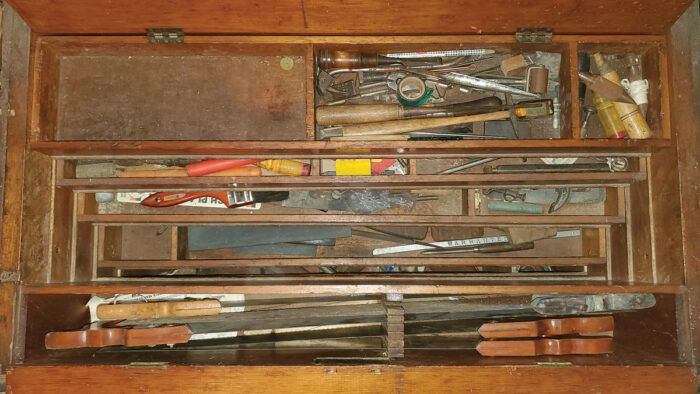
Synopsis: It was just a big old chest full of hand tools, but the mysteries within inspired a child to pursue a lifetime of woodworking. And when a power-tool mishap threatened his love for the craft, that old chest and its contents, with help from his dad, drew him back in.
My life as a woodworker began before I could tie my shoes. For as far back as I remember, I loved any time spent woodworking with my father. He didn’t have many power tools, but as a child I was fascinated by his large, green 19th-century tool chest, filled with hand tools.
My father had just turned 60 when I was born. He was the son of Polish immigrants, orphaned at 13, and raised by his siblings. In the mid-1930s he trained to be a cabinetmaker, but the realities of the Depression and World War II interrupted this path.
That didn’t stop his passion for woodworking, though. As a child, I’d dig through that large green chest in his small basement shop. “Dad, why is this plane so big?”
“It’s a jointer plane, for straightening edges.”
“What’s this thing?”
“A router plane.”
“What’s this weird spinning screwdriver thing?”
“That’s a Yankee Screwdriver … I don’t find them that useful.”
I know I broke a few tools. I didn’t know putting a twist drill in an antique bit brace would ruin the jaws or that you shouldn’t use a hammer as a mallet. He was patient, probably more upset at himself than he was with me.
He would let me help with small tasks. When I grew older, I was encouraged to make my own projects out of whatever scrap we had lying around. When not in the workshop together, we both enjoyed watching The Woodwright’s Shop on a black-and-white TV.
My father’s health began to decline when I was a teenager and he spent less and less time in his workshop. I ended up going to the same trade high school as he had 60 years previously, although I trained to be a machinist instead of a carpenter. The New Yankee Workshop started to take the Woodwright’s place for my woodworking entertainment, and I saved up for more power tools—first a small drill press, then a better tablesaw, router, dovetail jigs, and so on. The large green tool chest saw less and less action. I worked my way through college as a toolmaker and used woodworking to relax at night.
When I was 23, a near amputation on my tablesaw almost ended my interest in woodworking. My father, then in his early 80s, was the one who rendered first aid, turned off the saw after I ran upstairs bleeding, and got me to the emergency room. After weeks of recovery, I finished my project. But I was too nervous and jumpy around a tablesaw to use one safely.
I did miss making things, though. And once again it was my father who came to my aid, reminding me about the large green chest filled with hand tools.
As the years went by, I regained the confidence to use the tablesaw, but I never again neglected the hand tools in that chest. Shortly before my father passed away, at the age of 89, one of the last full conversations we had was about the joys of mixing power-tool and hand-tool woodworking.
Several years later, married and living in rural New Hampshire, I began pursuing woodworking and teaching woodworking semi-professionally. I am also a parent now and from the age of 2 my daughter has enjoyed “helping” in the shop.
I may not have any photographs of my father and me working together in his shop, but I have that green tool chest. Without that chest, which fascinated me so much as a child, and without the encouragement of my father, I would not be a woodworker.
David E. Matuszek blends power- and hand-tool woodworking in his shop in Lyndeborough, N.H.
 |
From the Bench: A long loose end |
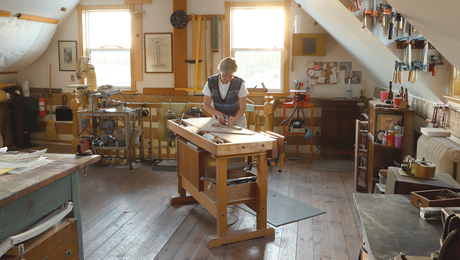 |
From the bench: My workbench |
 |
From the bench: My gift is my craft |



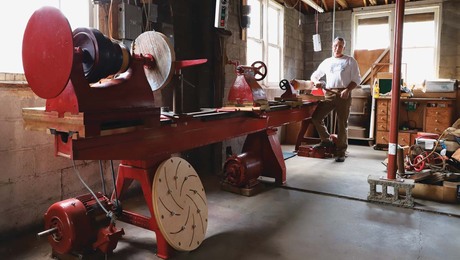


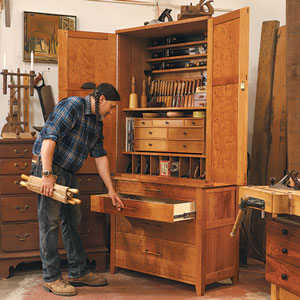
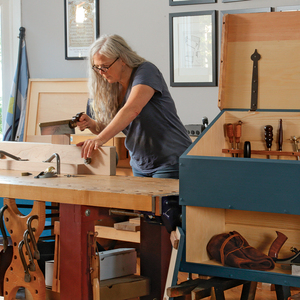














Log in or create an account to post a comment.
Sign up Log in